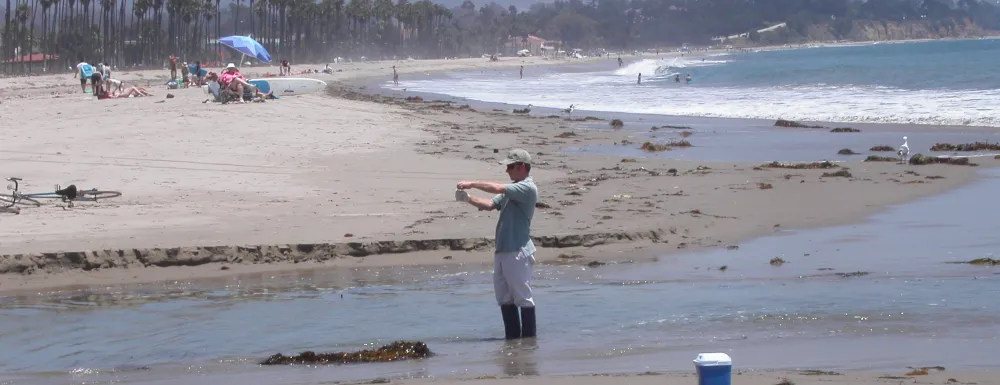
Control e Investigación de la Calidad del Agua
La División de Arroyos lleva a cabo un amplio programa de investigación y control de la calidad del agua con el fin de obtener información que la ciudad pueda utilizar para desarrollar estrategias de mejora de la calidad del agua, incluida la priorización de proyectos de capital y programas de divulgación/educación, y para comunicarse eficazmente con el público sobre la calidad del agua.
Los objetivos del programa de investigación y seguimiento son:
- Cuantificar los niveles (concentración, flujo o carga) de contaminación microbiana y química en las cuencas hidrográficas de la ciudad.
- Evaluar el impacto de la contaminación en los usos beneficiosos de arroyos y playas, incluidos el ocio y el hábitat de organismos acuáticos.
- Evaluar la eficacia de los proyectos de restauración y tratamiento de la calidad del agua de la ciudad, lo que incluye la recopilación de datos de referencia para futuros proyectos.
- Identificar y eliminar las fuentes de contaminación en arroyos y desagües pluviales.
- Evaluar las tendencias a largo plazo de la calidad del agua.
- Cumplir los requisitos de seguimiento para las subvenciones.
- Cumplir los requisitos de control del Permiso General (NPDES).
En apoyo de los objetivos del programa, éste se organiza en torno a seis elementos clave y preguntas de investigación asociadas:
- Requisitos de los proyectos de subvención
- Requisitos del permiso general
- Evaluación de la cuenca hidrográfica (incluidos los paseos por los arroyos y la bioevaluación)
- Control de tormentas
- Evaluación de proyectos de restauración y calidad del agua
- Seguimiento de fuentes

